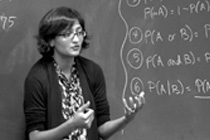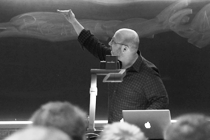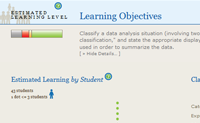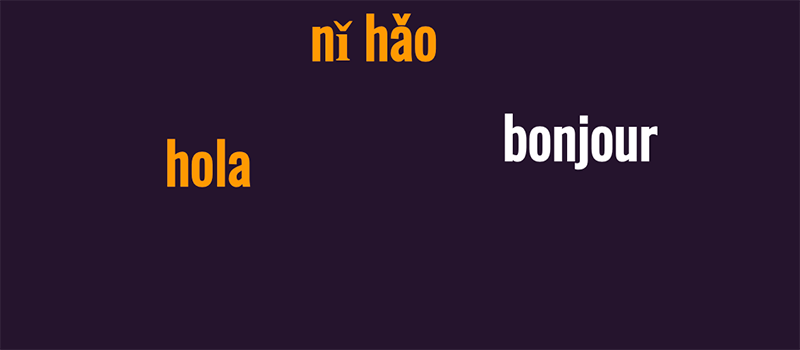An update from Theresa Schlafly, Writer/Editor and Project Manager at the Center for New Designs in Learning and Scholarship (CNDLS)
Schlafly describes how she and her colleague, Yong Lee, helped professor Parina Patel create more consistency between lab sections and more integration between the lecture and lab portions of her statistics course. They attended an OLI Platform+ workshop and created new course content using our platform, to be used during the lab sections.

Professor Parina Patel
At Georgetown University’s School of Foreign Service, Parina Patel teaches two courses on statistics for international relations, one for undergraduates and one for graduate students. Both classes are structured with a weekly lecture and a smaller lab session led by a teaching assistant. Frustrated by inconsistencies across lab sections and a disconnect between lab and lecture sessions, Parina turned to OLI as a way to ensure that her students were all on the same footing.
Oded Meyer (longtime contributor to OLI at Carnegie Mellon, now Associate Professor of the Practice of Statistics and Scholar in Residence at CNDLS) was able to advise her on the pedagogical process of developing content for OLI. The Center for New Designs in Learning and Scholarship (CNDLS), where I work, offered technical support for the project.
The Process
Parina, my colleague Yong Lee from CNDLS, and I traveled to Pittsburgh in July to take part in the Platform+ developers’ workshop at CMU. The OLI team helped us create content in Google Docs, convert it to XML, troubleshoot everything, and refine the content.
Developing appropriate learning outcomes, structuring the presentation of the content, and creating targeted feedback for learning activities proved to be time-consuming, but ultimately paid off. On the technical side, the learning curve was a bit steep, but Yong and I eventually settled into a workflow. We successfully made our ambitious deadline of publishing materials in time for Parina’s first class meeting at the end of August.

Ryan Walter
Professor Oded Meyer
In the Classroom
We were able to integrate OLI into the first lab session of Parina’s course, and are also using OLI for all of the problem sets throughout the semester. During the lab session, students worked independently through the OLI materials that Parina had designed, and the teaching assistants (as well as Yong and I) were available to answer questions as needed. This seemed to be an ideal format. As Oded explains, “No machine in the world will ever be able to substitute for an enthusiastic and inspiring teacher. The advantage of OLI is that it works in conjunction with the teacher.”
Overall, the OLI labs seemed to be a success in terms of Parina’s goals. Students liked being able to work at different paces, and Parina appreciated knowing that all of the lab sections had covered the same content.
Since deploying the initial OLI content earlier this semester, we administered a survey to students and facilitated several focus groups in the lab sessions. Students reported that they appreciated the flexibility of OLI, especially the ability to work at one’s own pace, but they also reported that they liked having the T.A. available to answer questions. They seemed to reinforce Oded’s research findings that the hybrid model—combining face-to-face instruction with OLI materials—is the most effective.
What’s Next
For the spring semester, we plan to make small adjustments to the existing lab content and problem sets, and to begin working on additional modules to be deployed next fall.
We also aim to integrate the Learning Dashboard into the course materials. Parina hopes to use the Learning Dashboard data to refine her lecture content in order to target misconceptions and further strengthen the connection between lab and lecture sessions. We’re excited to continue working on the project, and we hope to have more updates to share soon.
You can read more about Parina’s project, and you can view video clips of Oded talking about OLI.





